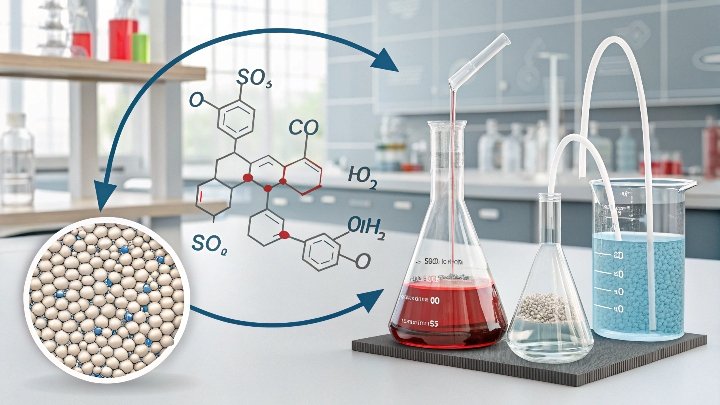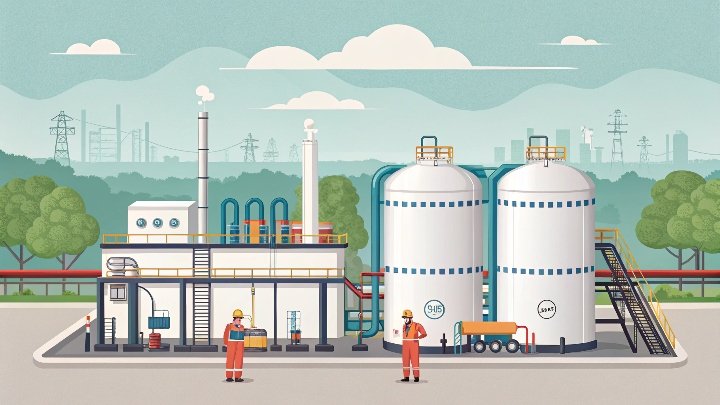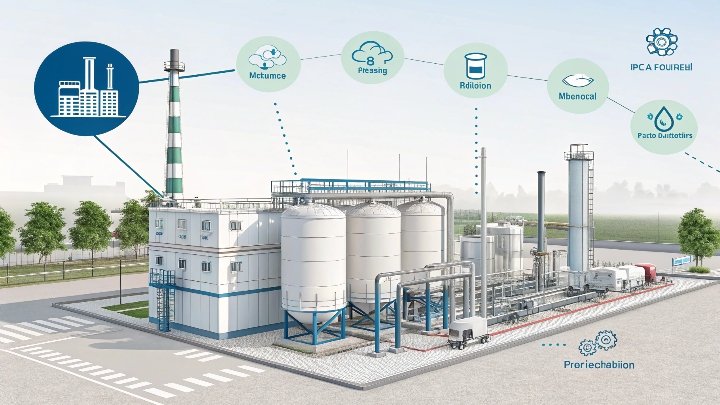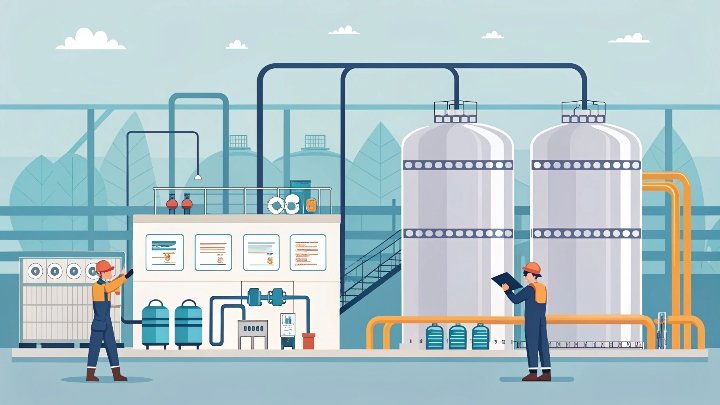I used to waste time solving methanol moisture problems. I felt frustrated. Then I found a simple solution that changed everything.
I use a special molecular sieve to keep methanol dry. This method stops moisture from causing trouble in production. It helps me produce pure and stable methanol. It reduces downtime. It also saves money.
I felt anxious when I first learned about methanol’s sensitivity to water. I worried about contamination. I wanted a hero that could remove moisture fast. Then I discovered 3A molecular sieve. Next, I want to explain how this sieve works and why it is a real superstar.
Why Methanol Needs a Drying Superhero?
I remember the days when my methanol-based projects failed. The problem was water. This water changed reaction rates and caused unwanted byproducts. I got tired of reworking. Then I learned that methanol must be dried carefully. This helped me keep things under control.
Methanol needs a drying superhero because water leads to inconsistent results and lowered purity. That moisture can harm reaction yields. A strong adsorbent can fix these problems and help make dependable methanol solutions.
why water is a big deal
I want to share more details about the true impact of water on methanol. Water seems harmless, but even small amounts can trigger unexpected issues. First, water in methanol can shift reaction equilibria. This lowers yields. It also produces side reactions. In some processes, I saw that unwanted byproducts formed because the water acted as a reactant. That caused more cleanup steps. It increased time and costs.
Second, water can shorten the lifespan of certain catalysts. I once watched my catalysts degrade and lose efficiency. I realized that moisture was the main culprit. Many catalysts have sensitive structures that do not like extra water. If these structures get damaged, it is hard to restore them to full efficiency. This means more expenses for catalyst replacement.
Third, water can induce corrosion in storage vessels, pipelines, or reaction equipment. Corrosion is not just an eyesore. It can release unwanted metals or other contaminants into the methanol. That lowers the final product quality. It also raises safety concerns, since corroded parts can lead to leaks or system failures.
Fourth, wet methanol is less stable during transport. When I tried shipping methanol with higher moisture content, I noticed changes in color and quality. This can put manufacturers in a difficult spot with their customers. Buyers often demand consistent purity. If that is not guaranteed, they will look for other suppliers.
These challenges led me to see methanol dehydration as a crucial step. I did not want to risk my entire production line. I wanted a better method. I tested different approaches like distillation and other adsorbents. Some worked partially, but they were not efficient enough or they introduced large energy costs. That is why I eventually turned to 3A molecular sieve. It offered effective, selective adsorption of water. This changed the game. Now, I rely on it to keep methanol dryness stable over time. I trust it because it eliminates water quickly and does not damage the methanol structure. It also does not add complicated steps to my process. It simply works.
The Rockstar of Drying: 3A Molecular Sieve?
I once struggled with inconsistent yields. Then I found a special type of adsorbent. It was not just an ordinary material. It was 3A molecular sieve. I saw higher production rates and better product quality. That is when I realized 3A was the real star.
The 3A molecular sieve stands out because it has a specific pore size that removes water but leaves methanol alone. It solves water problems without damaging methanol. That is why I call it the rockstar of drying.
what makes 3A molecular sieve so special
I found that 3A molecular sieve is designed with a pore size of around three angstroms. I learned that this size only allows smaller molecules like water to enter. Larger molecules, like methanol, cannot pass. This means the sieve selectively adsorbs water while leaving methanol behind. This selectivity is key. It stops methanol from being trapped. It also reduces the chance of losing valuable product.
I also discovered that 3A molecular sieve is stable under varied conditions. I have used it in high-temperature processes and it still performs. It does not release water back into methanol unless you heat it to a higher temperature during regeneration. That means you can reuse it multiple times. It is durable, so it is a cost-effective solution. I have seen that this stability helps me control my operational costs.
Then there is the matter of chemical compatibility. I used to worry about materials dissolving or reacting with methanol. 3A molecular sieve does not cause trouble. It is made from aluminosilicate compounds that resist chemical attack. This helps me avoid contamination concerns. It also simplifies compliance with regulations because I do not have extra chemicals leaching out.
I sometimes get asked: “Couldn’t I just distill the methanol?” Distillation can remove a large portion of water, but it can be energy-intensive. And if you want dryness at a very low water level, you still need an adsorbent. 3A molecular sieve is perfect for final drying. It polishes the methanol to the dryness level you want. I find that combining an initial distillation step with 3A molecular sieve for the final dehydration gives the best results. It lowers energy usage. It keeps the product in spec. It prevents any water from sneaking through.
Additionally, 3A molecular sieve can handle more than just methanol drying. I rely on it for other processes that require the removal of moisture from various solvents and chemicals. It is a versatile tool. This means that if you want a single adsorbent to handle your overall moisture issues, 3A molecular sieve is a strong candidate.
One final advantage is how it helps me keep everything simple. I do not need complicated multi-stage methods. I place the sieve in a column, let the methanol flow through, and let the sieve capture water. Then I regenerate the sieve when it is saturated. The overall process is not confusing. It just works. That is why I love calling it the rockstar of drying. It solves a major problem in a straightforward way.
How 3A Molecular Sieve Works Its Magic?
I once asked myself: “How does this sieve separate water from methanol so neatly?” I wanted to see if it was more than just a simple filter. I discovered that it uses a special pore system to lock in water. That gave me a sense of awe.
3A molecular sieve removes water from methanol by using its small pore openings. They pull in water molecules through capillary forces and hold them. This keeps the methanol stream free from moisture.
Mechanism and practical applications
I like to break down how 3A molecular sieve captures water. First, there is a concept called adsorption equilibrium. When I pass methanol through a bed of 3A beads or pellets, water molecules migrate into the pores. Those pores have a strong affinity for water. This is because of differences in polarity. Water is more polar than methanol. The aluminosilicate lattice in 3A has sites that strongly attract water molecules. This leads to selective uptake. During normal operation, the molecular sieve continues to load with water until it reaches an equilibrium.
When I see that the sieve bed is reaching saturation, I switch to a fresh bed or start regeneration. Regeneration involves heating or applying a vacuum to drive off the water from the molecular sieve pores. Once it is dry again, I reuse it in the methanol drying cycle. This cycle allows continuous operations, especially when I have multiple beds in my system.
In a typical industrial process, I like to have a guard filter before the sieve bed. This stops dust or heavy contaminants from entering and fouling the sieve. I also keep an eye on temperature and flow rate. I like to keep them at optimal levels to maximize water uptake. If the flow is too fast, the contact time is short. That might lower the removal efficiency. If it is too slow, it can reduce productivity. So I find a balance. I rely on data from real runs to fine-tune the flow speed.
I also pay attention to operating costs. While the sieve approach seems straightforward, there are costs linked to regeneration. I use either a heated purge or vacuum method. The method I choose depends on the type of system and the energy resources available. In some cases, I use the heat from other parts of the plant to regenerate. This reuses waste heat, so it saves money and energy.
Furthermore, I see many places that use 3A molecular sieve for drying methanol in different applications. It is not limited to just chemical synthesis. It is also valuable in making cleaning agents, fuels, and adhesives. It helps me keep water levels low so the final products meet quality standards. For example, in leather processing, I need consistent solvent dryness to control chemical reactions on the hide. In agricultural applications, a stable and moisture-free methanol feedstock can help produce fertilizers or other organic compounds with better consistency.
I used to wonder if there was a risk of losing too much methanol during adsorption. That is not a big problem. The 3A pore size blocks methanol. It is too large. This ensures that the sieve mostly traps water. The performance is efficient, and I am confident I am not throwing money away by losing my main product.
Lastly, I always keep track of the condition of my molecular sieve. If it becomes contaminated with oils or other impurities, performance drops. So I either replace or regenerate it carefully. This extends the life of the adsorbent and gives me stable results. I find it helpful to keep logs of operating conditions, cycle times, and water content. That data helps me predict when I need to switch out or regenerate the adsorbent. It also helps me prove to regulators and customers that I maintain consistent product quality.
This is how 3A molecular sieve works its magic. It is simple, reliable, and easy to integrate into various operations. It captures water and leaves methanol alone. And that is what makes it a top choice in methanol drying applications.
Conclusion
I trust 3A molecular sieve for methanol drying because it saves time, cuts costs, and delivers dependable results.






